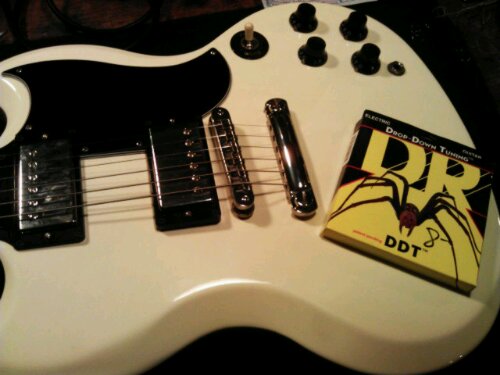
Here we have a newer Gibson SG standard belonging to Sam, guitarist for hard-punching local band Manrock. Everything feels and sounds pretty good on the guitar, but the bass strings have no sustain above the 13th fret.
Here we see why:

Sam likes low action, but to compensate for the excursion of the heavier strings in the 11-54 set he uses, someone has cranked a ton of relief into the neck…

While lowering the bridge way down to keep the action low and cranking the tail piece down to keep the strings from feeling floppy. For some players this is a good formula…
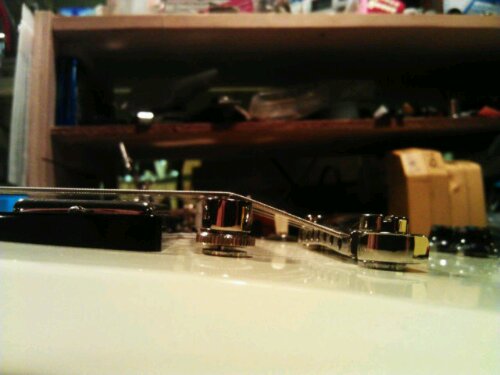
but in this case the super low bridge leaves no clearance for the strings on the upper frets, where neck bow has little effect on string height. The bass strings on the upper frets are practically dead.
Here’s how I like to set up a guitar for detuning while keeping the action comfortable. It doesn’t work for all guitars or all players, but is a good starting point, especially for gibsons.
With the strings slacked off, I set the neck almost perfectly straight
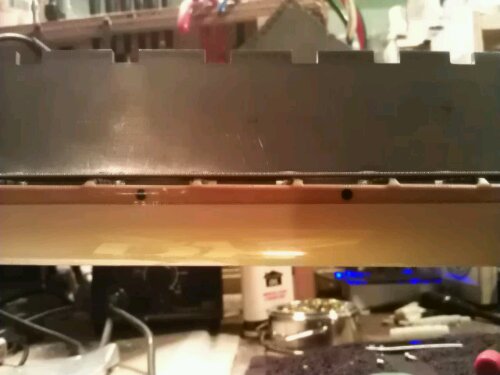
Tuned to pitch (drop C) with the right strings, the neck pulls into a slight relief, but much less extreme than before.
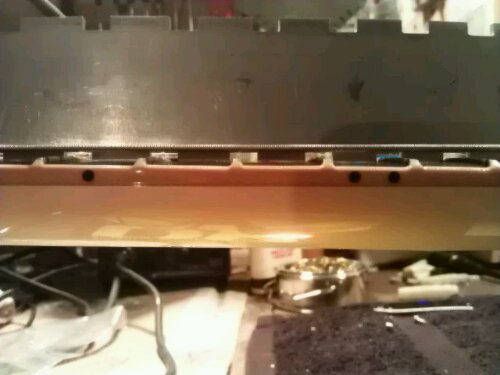
Then setting the action at a playable height at the last fret (about 3/32 bass side and 2/32 treble)
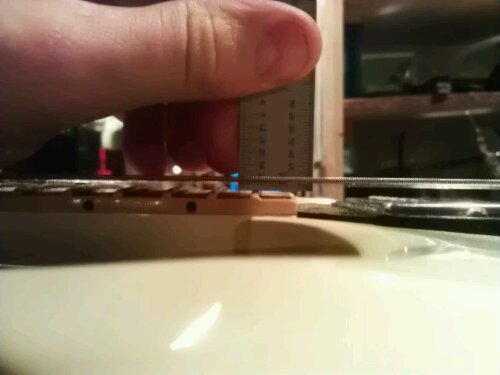
We get a great stock Gibson action at the 12th fret (5/64 & 3/64 low and high e strings respectively.)

With these settings the neck plays comfortably all over. Every guitarist is different, and for some this would be too low. Heavy pickers or even lower tunings (B standard, and even A, aren’t that rare) would require a bigger compromise on action.
All setups are a balance between the geometry of the bridge height, nut height, and neck curvature. In this case the changes I’ve made reveal the reason for the excessive relief.
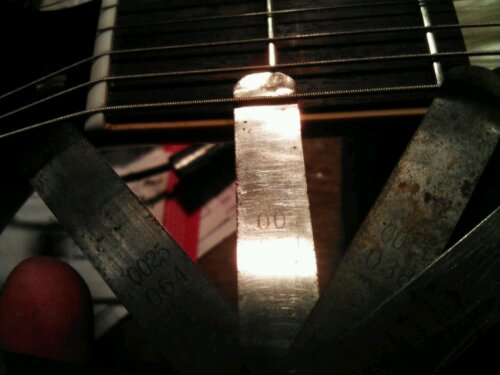
With the neck straighter, there is only about .002″ of clearance between the A (G in this tuning) string and the first fret, and the other strings aren’t much better. That’s WAY too low, and the open strings are buzzing.
I’ve seen this issue on at last half a dozen newer Gibsons. They’re set up for E standard with 10s, and the nut height is riding the line of too low from the factory. Change your tuning or string gauge too much and you’re in buzz central. (incidentally this is one reason even brand new guitars can benefit from a pro setup.)
A nut shim, a few adjustments to the setup I’ve already done, and an intonation, and this guitar will be back to churning out power riffs, with just as nice an action as in standard tuning. I work for a lot of players with lowered tunings, and setup/nut work almost always makes the difference between “off” and “right on” when it comes to feel.

I 100% agree with you about the new Gibson SG and I believe the big factor here is neck angles are off. When I bought one I had to return it because the neck angle was so off they raised the bridge to compensate and there for the action was very high, around 6-7/64ths of an inch on the bass side! I kept returning the guitars ( bought from guitar center ….go figure) and they kept being replaced with guitars with the SAME EXACT PROBLEM!!! I about 4 months later I got an SG with a solid body so I kept it and decided I would just pay to have somebody with proper luthier skills to fix it. I play metal and have wanted to use heavyer strings but i had to put a bow in the neck and drop the bridge/saddel just like you discribe in your blog just to use 10-46 strings without buzz when in drop tune. If you could help, please contact me asap.